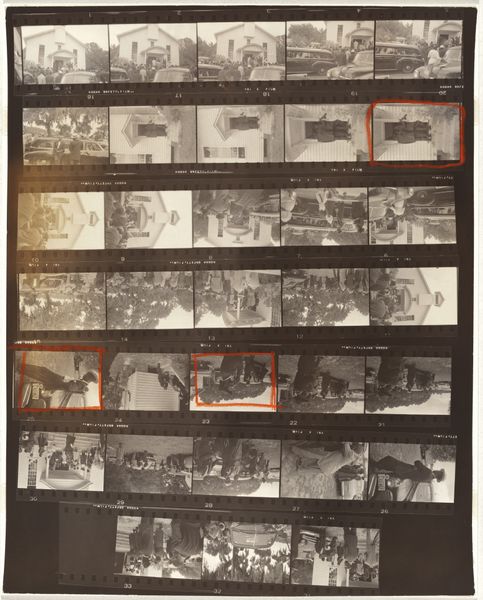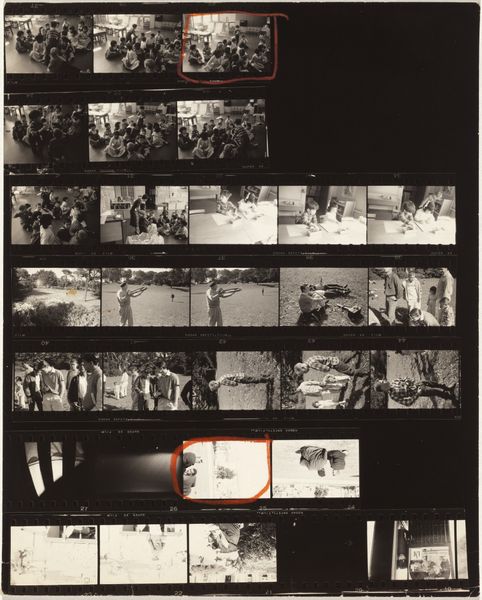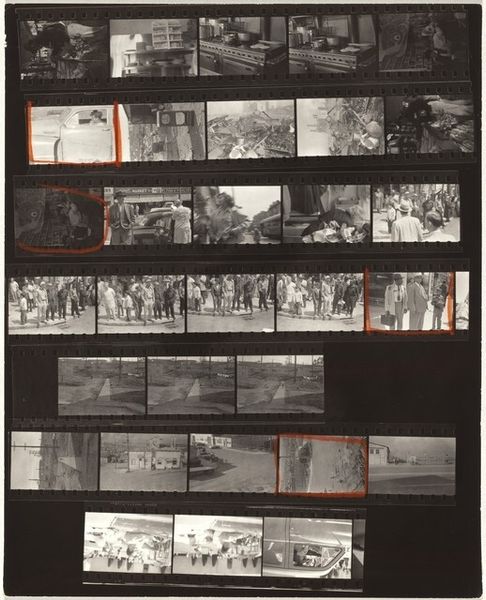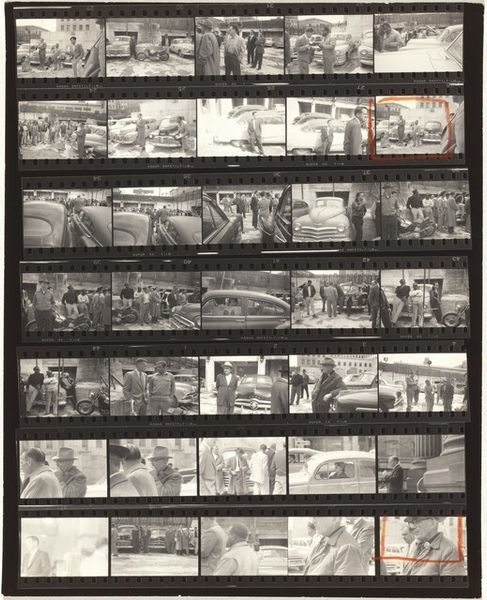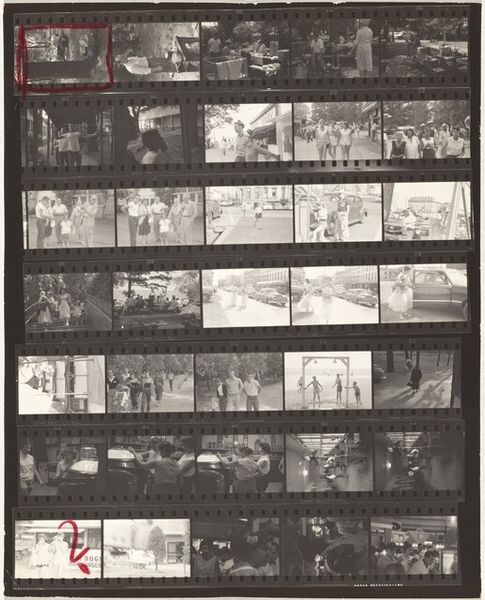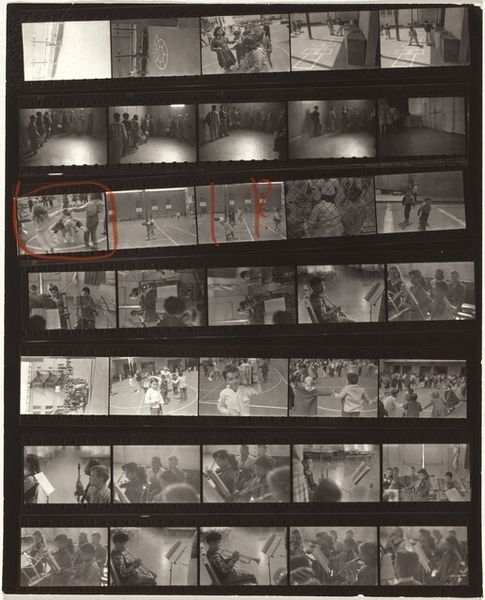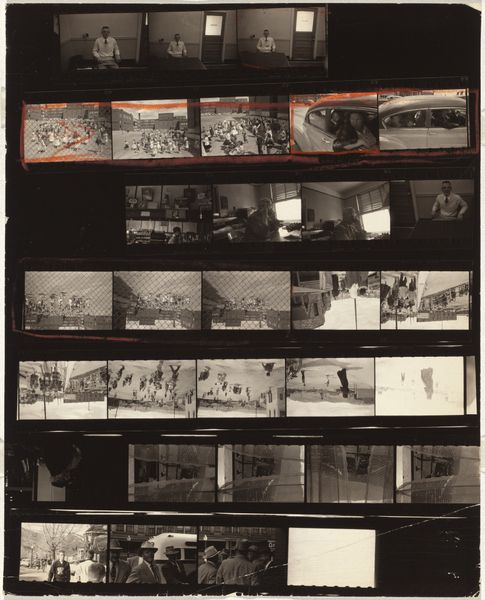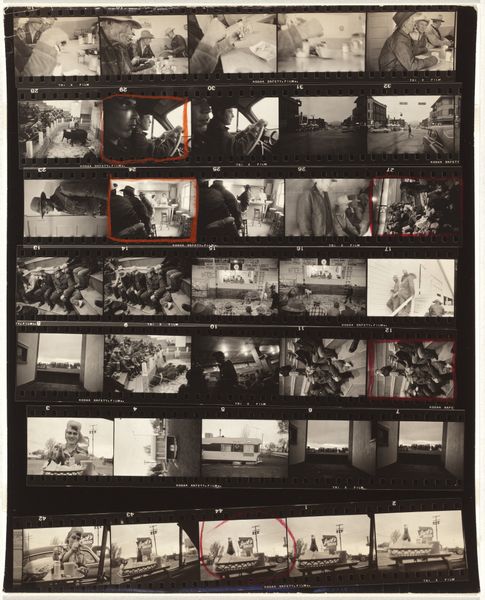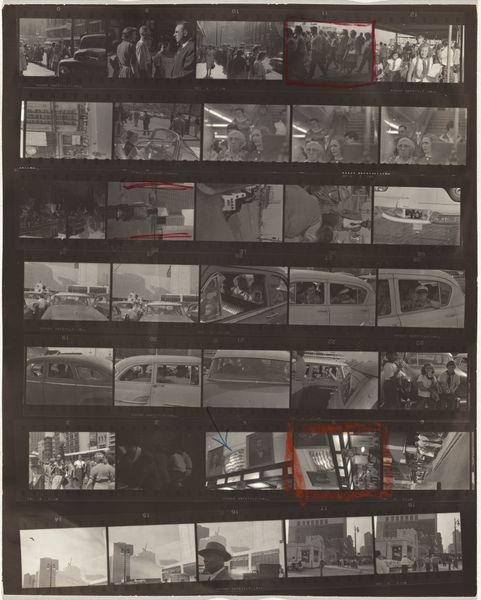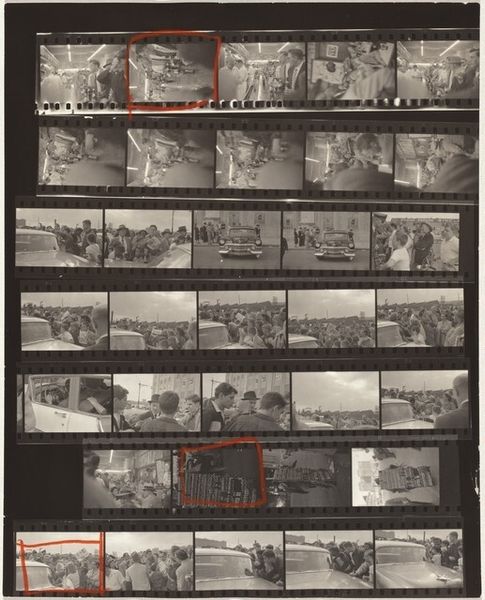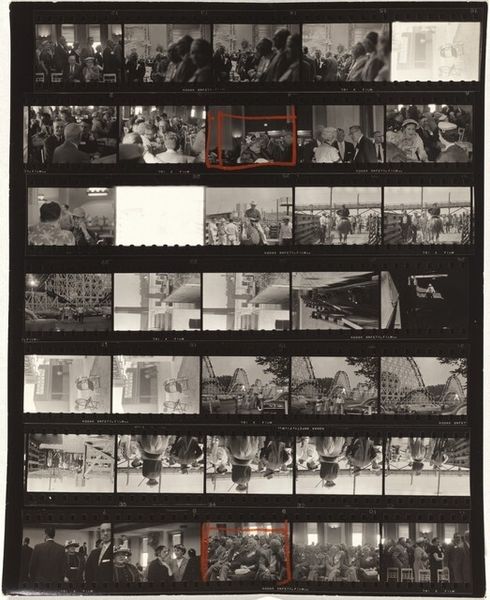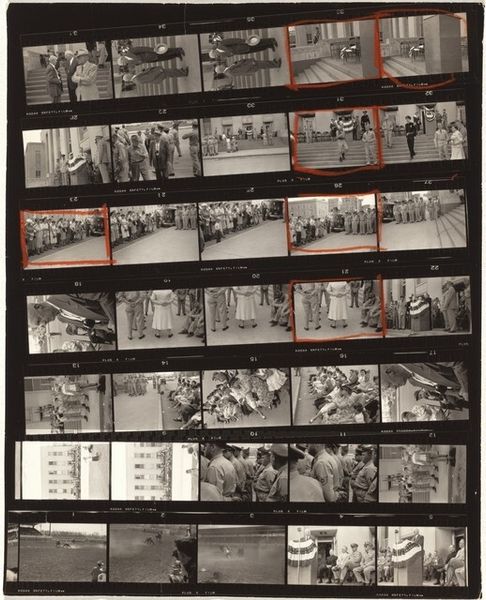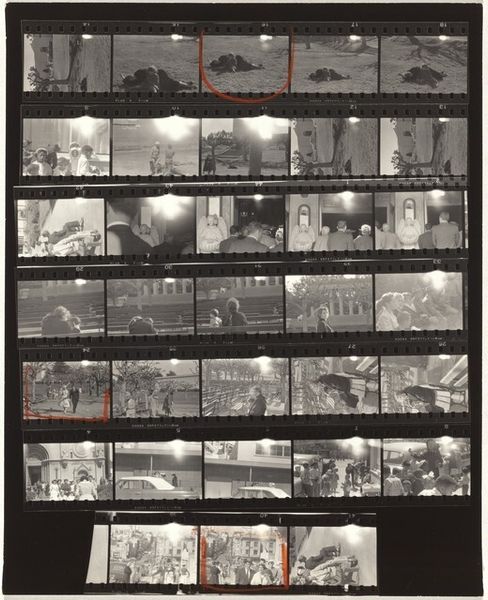
photography, gelatin-silver-print
#
portrait
#
film photography
#
landscape
#
street-photography
#
photography
#
gelatin-silver-print
#
ashcan-school
#
realism
Dimensions: 25.2 x 20.2 cm (9 15/16 x 7 15/16 in.)
Copyright: National Gallery of Art: CC0 1.0
Curator: This is a filmstrip, titled "Guggenheim 722/Americans 64--Lincoln, Nebraska", a 1956 work by Robert Frank. It's a gelatin silver print, showcasing scenes from daily life. What strikes you about it? Editor: Well, the immediate effect is a sort of melancholic snapshot of Americana, that almost gritty feel of mid-century documentary, yet with an undercurrent of something being amiss in all these little moments. Curator: That's interesting. I read it somewhat differently, in the context of its time, it felt very political and that rings through. Frank’s work, particularly "The Americans," can be understood as a critical commentary on the societal landscape of the US in the post-war era, grappling with issues of race, class, and alienation. Editor: I get that, definitely, but its brilliance also resides in his choices of everyday subjects. I wonder how his perspective was influenced, you know? Curator: Definitely influenced, and as an immigrant, it could have given him that needed perspective, to see beyond all. It seems to capture these banal settings that show deeper insights when you really look at what’s presented here, the good, the bad, and ugly of what it means to live in a consumer-driven America at that time. Editor: But is that critique always clear? Because there’s a danger in simplifying how people receive imagery and media; as social forces shift, it opens a work to various reinterpretations. Curator: Perhaps, yes. That's the exciting thing, that after nearly 70 years this still has a conversation being produced through interpretation. It offers no closure, no clean resolution to how the viewer should feel. It presents fragments. And, let’s not forget, the sequencing, the narrative thread that filmstrips visually allow—contributes to this effect too. Editor: Yes! You feel as if you, the viewer, also took part in a clandestine journey! It invites introspection, on personal levels as well, through those universal emotions we grapple with still in present day. The scale of that task should also be commended. Curator: Well, this has really revealed to me how its documentary lens asks about the past but leaves the future in a state of questioning. Editor: Absolutely! It remains resonant by being both an artifact of a specific time and a mirror to evolving perspectives.
Comments
No comments
Be the first to comment and join the conversation on the ultimate creative platform.
